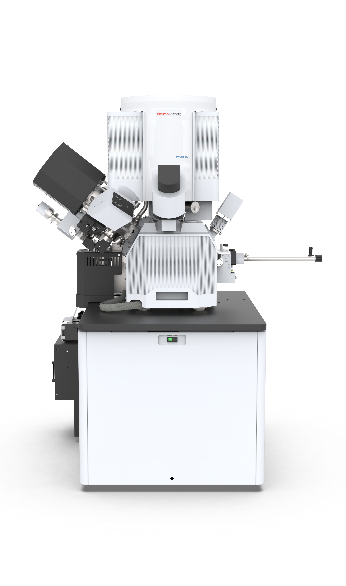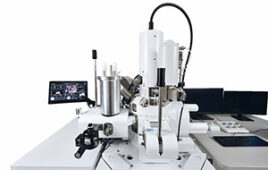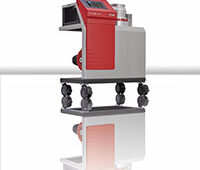 The new Thermo Scientific Hydra Bio Plasma-Focused Ion Beam (Plasma-FIB) is designed for cell biologists seeking simplified workflows while undertaking volume electron microscopy for cryo or resin-embedded samples.
The new Thermo Scientific Hydra Bio Plasma-Focused Ion Beam (Plasma-FIB) is designed for cell biologists seeking simplified workflows while undertaking volume electron microscopy for cryo or resin-embedded samples.
Building on the cross-industry standard Thermo Scientific Helios Hydra DualBeam platform, the Hydra Bio Plasma-FIB is a versatile, multi-application instrument that supports volume electron microscopy and sample preparation for the cryo-electron tomography workflow. From tissues to proteins, this instrument is designed to be a bridge from cryo-EM to room temperature analysis or vice versa and to help cell biologists spend more time focused on advancing their complex research projects.
The Plasma-FIB’s key applications are to perform volume electron microscopy with frozen and room-temperature samples to study cellular architecture and to prepare samples to study the molecular architecture of cells and tissue.
Features:
- Volume electron microscopy: The Hydra Bio Plasma-FIB supports various microscopy techniques, such as FIB-SEM serial sectioning (at room temperature and cryogenic conditions), array tomography, and cryo-electron tomography, allowing biomedical researchers to study the 3D complexities of cells, tissue, and small organisms at nanometer resolution.
- Multiple ion species: Users can quickly switch between four ion species (Xe, Ar, O, and N) to optimize for the specific requirements of each sample.
- Cryogenic operation: Researchers can investigate cellular architecture, in native conditions, and with excellent contrast. They can uncover sub-cellular details on high-pressure-frozen and plunge-frozen samples with no staining required.
- Room temperature operation: Cell biologists can uncover large sample areas and visualize regions of interest with the Spin Mill Bio Method. This unique large-area planar-milling technique generates areas of similar size as microtome slicing but at slice thicknesses as small as 5 nm. Prepare clean, smooth surfaces used to localize regions of interest and subsequently image them in 2D or 3D.
For more information, visit www.thermofisher.com/HydraBio





Tell Us What You Think!